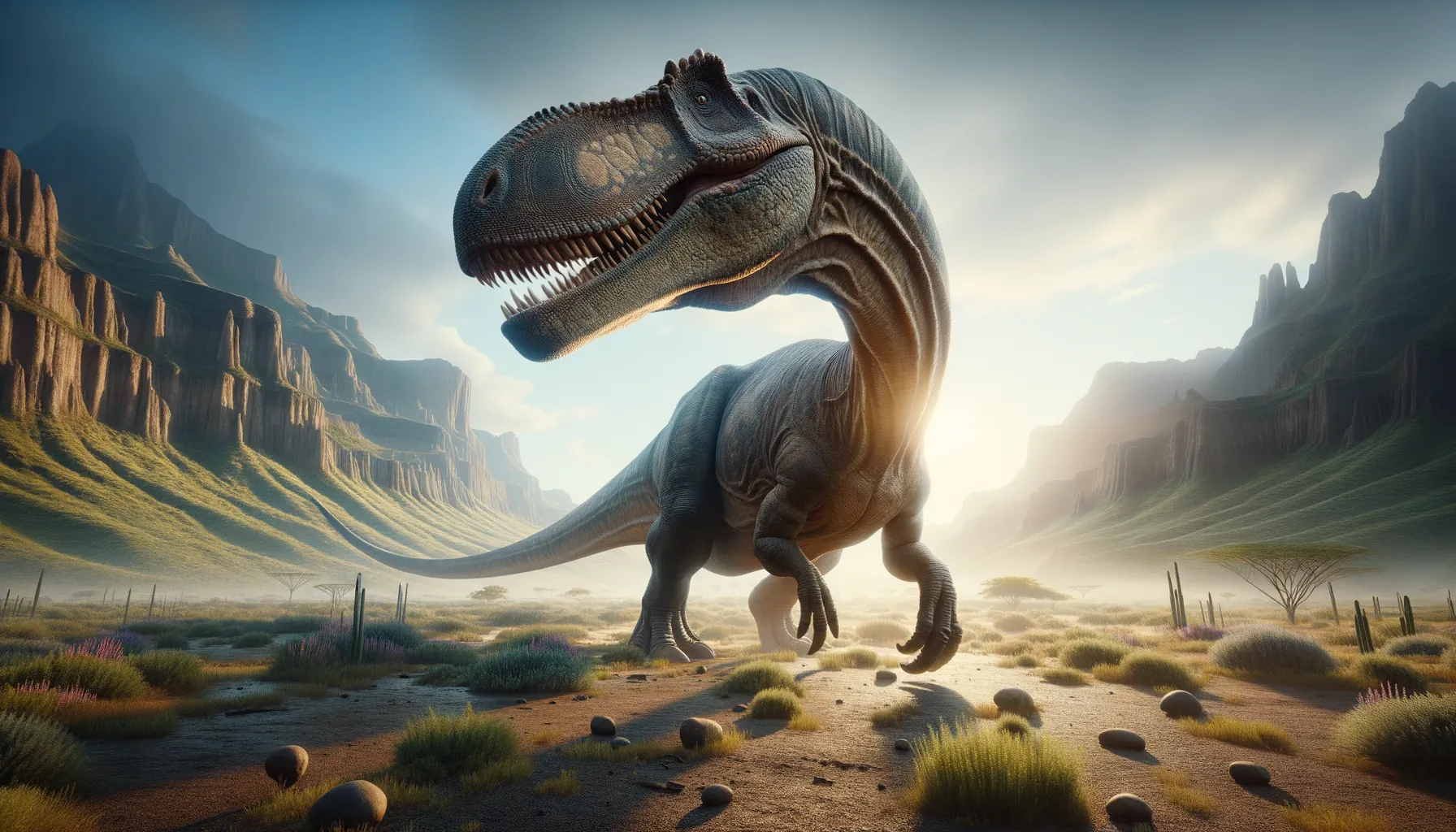
Borealosaurus
A gentle giant of prehistoric times.
Period
Cretaceous
Length
About 25 meters long.
Height
Around 10 meters tall.
Weight
Approximately 20 tonnes.
Borealosaurus was a large, plant-eating dinosaur that roamed the earth during the Cretaceous period, approximately 125 million years ago. Known for its massive size and weight, Borealosaurus belongs to the family of long-necked dinosaurs, sauropods. Its fossils were first discovered in northern China, providing insights into the prehistoric ecosystems of the region. This dinosaur has become an important part of paleontological studies, helping scientists understand more about the diversity and adaptation of sauropods.
Diet
Borealosaurus was a herbivore, feeding primarily on vegetation. Its long neck allowed it to reach high into trees for leaves and other plant material.
Hunting
As a herbivore, Borealosaurus did not hunt other animals. Instead, it would forage for plants and use its height to access a variety of foliage in the forest canopy.
Environmental challenges
Borealosaurus faced several environmental challenges, such as changes in climate and vegetation. The shifting landscapes of the Cretaceous period required it to adapt to varying food availability. Predation from large carnivorous dinosaurs was also a threat, although its size likely deterred many potential predators. Additionally, Borealosaurus had to deal with natural disasters like floods and volcanic eruptions that could reshape its habitat.
Speed
Slow-moving due to its massive size.
Lifespan
Estimated to live up to 70 years.
First discovery
First discovered in China in 2004.
Fun Facts
- Borealosaurus was a long-necked dinosaur that lived about 90 million years ago during the Late Cretaceous period.
- Its name means 'Northern lizard' because its fossils were found in the northern hemisphere, specifically in China.
- Borealosaurus belonged to the titanosaur group, which were some of the largest dinosaurs to ever roam the Earth.
- This dinosaur likely lived in a lush, forested area and might have been a herbivore, eating plants with its long neck to reach high branches.
- Despite its massive size, very few fossils of Borealosaurus have been found, making it somewhat of a mystery to scientists.
- Borealosaurus is known from a single partial vertebra, which gives hints about its size and lifestyle.
- It showcases the vast diversity of life that existed during the age of dinosaurs, even in regions that are less explored today.
Growth and Development
Borealosaurus experienced significant growth during its early years, rapidly increasing in size. Like many sauropods, it is believed to have laid eggs, with hatchlings receiving no parental care. The young dinosaurs relied on instinct and quickly learned to fend for themselves in the wild. Juveniles likely grew at a fast pace to reach a size that reduced vulnerability to predators.
Habitat
Borealosaurus inhabited environments with ample vegetation such as forests and floodplains. Its presence in what is now northern China suggests it lived in regions with diverse plant life. These areas provided the necessary resources for its herbivorous diet. Access to water sources, like rivers or lakes, was also crucial for Borealosaurus to survive.
Interaction with other species
Borealosaurus likely coexisted with other herbivorous dinosaurs, sharing plant resources. It would have interacted with small-bodied dinosaurs that posed no competition for food. Large theropods, potentially dangerous predators, were part of its ecosystem, although Borealosaurus's size provided some protection. Symbiotic relationships with smaller animals, like birds that cleaned its skin, may have existed.
Natural lifespan
Borealosaurus possibly lived for about 50 to 70 years.
Reproduction
Borealosaurus reproduced by laying eggs in nest sites. These nests were likely situated in safe, protected areas to avoid predation. Clutches consisted of several eggs, and once laid, the young dinosaurs were left to hatch and grow independently. This reproductive strategy was typical for many large sauropods.
Social behaviour
Borealosaurus may have exhibited some social behaviour, traveling in herds for protection and social interaction. Herd living provided advantages such as increased vigilance against predators. Communication through vocalizations or physical displays could have been part of its social dynamics. Herding also facilitated migration to new feeding grounds.
Fossil locations
The main fossil discoveries of Borealosaurus have been made in northern China, particularly in the Liaoning Province. These findings have helped paleontologists understand the distribution and diversity of sauropods in the region. Such fossils are crucial for reconstructing the evolutionary history and paleoecology of this dinosaur genus.
